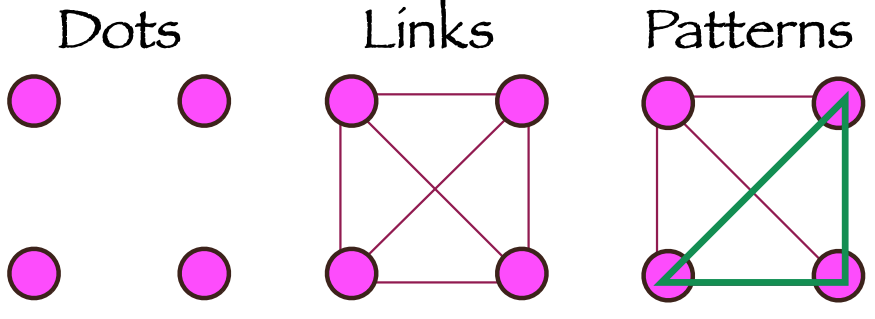Why is it Challenging to Connect The Dots?
Oli Gibson
"You can't connect the dots looking forward; you can only connect them looking backwards"
Steve Jobs
In his 2005 Stanford commencement speech, Steve Jobs talks about planning for the future. Looking back he reflected that it would have been impossible to see how some of the things he did early in his career would help him achieve what he did in the future. It was only after the events that he could connect the dots and see how he got there.
Steve was right, often, we can only connect the dots backwards, but why is that?
Imagine we have four dots. These dots could represent events in your life, people in a company or nodes within a system. If we try to map all the possible links between two of these dots, you can see there are six and if we form all the possible patterns there are sixty-four.

This is quite easy to calculate, we can all work this out without much thinking. This is why we can all connect the dots forwards on simple tasks we have done many times before because the number of possible patterns is quite low. So, what happens when we increase the number of dots?
| Number of Dots | Number of Links | Number of Patterns |
| 4 | 6 | 64 |
| 10 | 45 | 35 trillion |
| 12 | 64 | 73.8 quintillion |
As you can see the number of possible patterns grows exponentially compared to the number of dots. We only have a small number of dots but can you imagine how many there are in a human system or how many dots make up the events and experiences in your life?
In this simple example, we made the dots visible, but in life, we often don't even know how many dots there are. Even if we did there would be so many we could never predict the future pattern because they are simply too numerous to imagine.
This is why you can't connect the dots forward, though I suspect many individuals and even more organisations will continue to try!